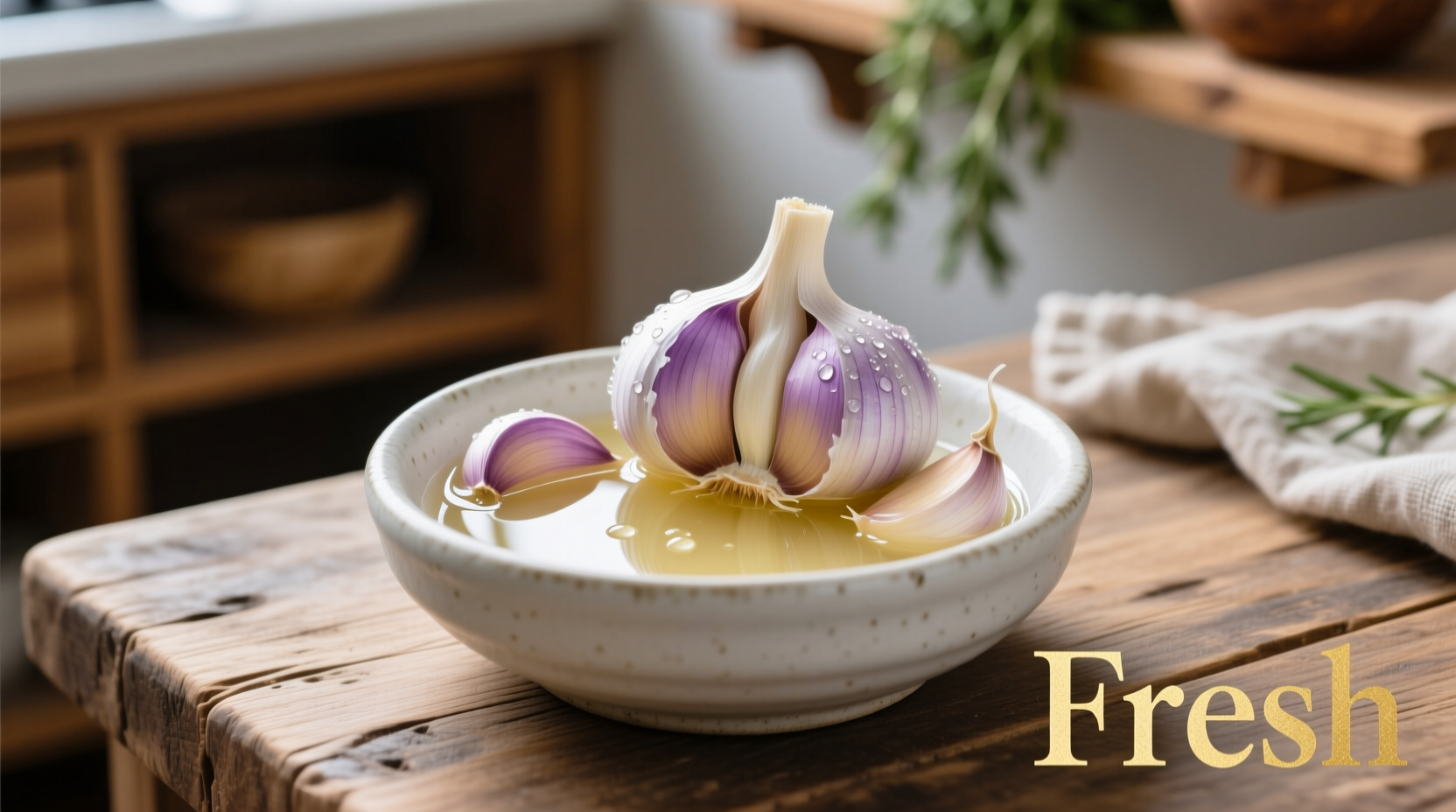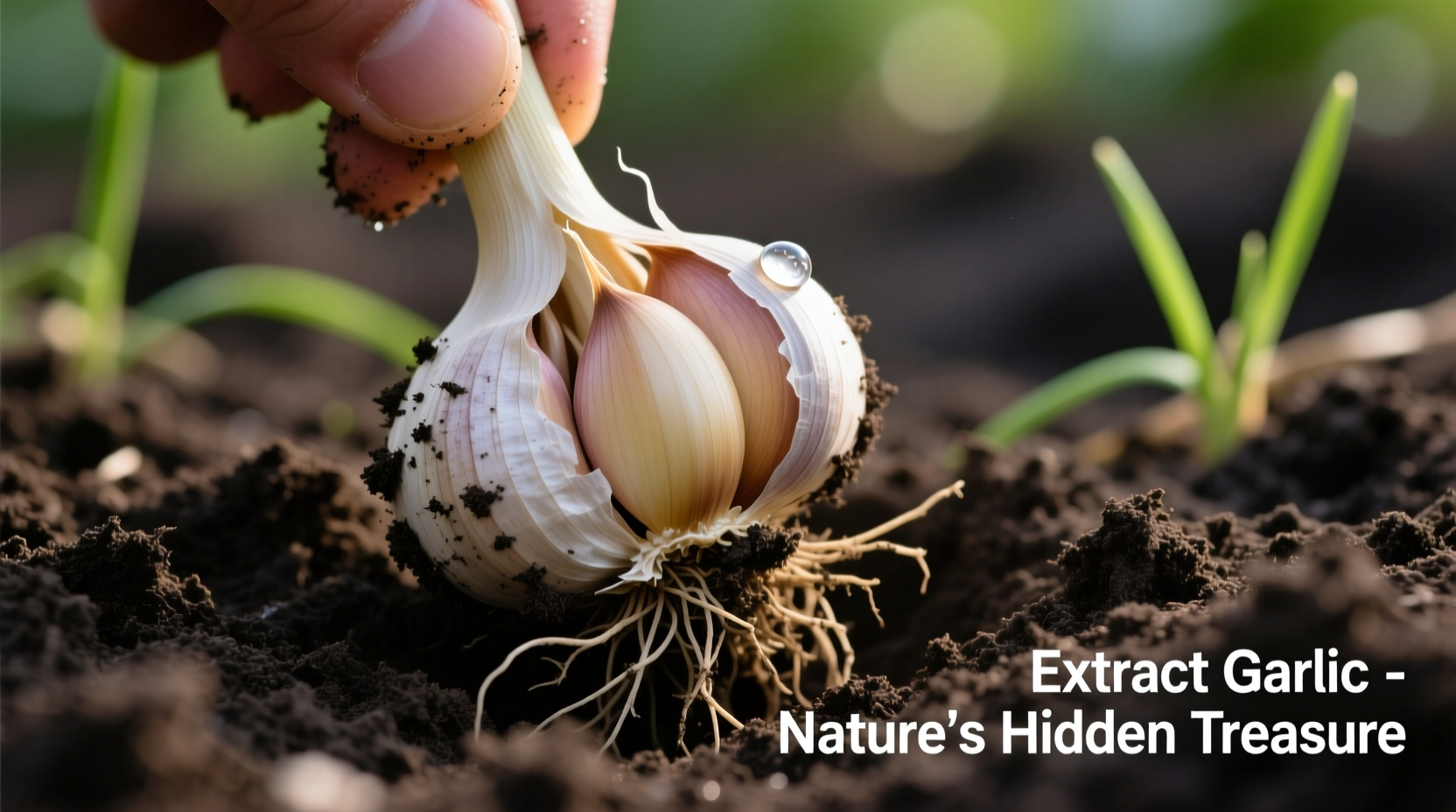Garlic extract is a concentrated form of garlic created by separating its active compounds from the raw bulb. The most effective home methods include cold pressing for immediate culinary use, alcohol-based tinctures for long-term preservation, and oil infusion for flavor extraction. Each method yields different concentrations of allicin and other beneficial compounds, with cold pressing providing the highest immediate potency but shortest shelf life.
Why Garlic Extraction Matters for Flavor and Health
When you extract garlic, you're isolating its most valuable compounds—primarily allicin, which forms when raw garlic is crushed or chopped. This sulfur-containing compound gives garlic its distinctive aroma and provides most of its celebrated health benefits. Unlike raw garlic, properly extracted forms deliver consistent potency without the harsh bite that can overwhelm dishes.
Professional chefs and herbalists have refined extraction techniques over centuries to maximize both culinary applications and therapeutic potential. The method you choose depends entirely on your intended use—whether you're creating a delicate sauce that needs subtle garlic notes or preparing a wellness tonic requiring maximum bioactive compounds.
Three Proven Methods for Extracting Garlic at Home
Cold Press Extraction (Best for Immediate Culinary Use)
This technique preserves garlic's volatile compounds better than heat-based methods. Start with fresh, firm bulbs—soft or sprouting garlic yields inferior results. Peel cloves, then crush them with a garlic press directly over a fine mesh strainer placed above your collection container.
"The key to successful cold pressing," explains Antonio Rodriguez, culinary spice specialist, "is working quickly after crushing. Allicin begins degrading within minutes of exposure to air, so process small batches and use immediately for maximum potency."
| Method | Yield per 10 cloves | Active Compound Preservation | Best Used Within |
|---|---|---|---|
| Cold Press | 1.5-2 tsp | 90-95% | 24 hours |
| Alcohol Tincture | 4-6 oz liquid | 85-90% | 2 years |
| Oil Infusion | 8 oz oil | 70-75% | 1 month |
Alcohol-Based Tincture (Optimal for Long-Term Preservation)
For stable, shelf-stable garlic extract with preserved medicinal properties, tinctures outperform other methods. The National Center for Complementary and Integrative Health notes that alcohol extraction effectively preserves garlic's organosulfur compounds while eliminating bacterial growth concerns associated with oil-based methods.
Step-by-step process:
- Finely mince 10 peeled garlic cloves
- Place in glass jar with 1 cup high-proof alcohol (vodka or grain alcohol)
- Seal tightly and store in dark place for 2-4 weeks
- Strain through cheesecloth, squeezing gently to extract all liquid
- Store in amber glass dropper bottle away from light
This method produces a versatile extract usable in cooking or diluted for wellness purposes. The alcohol evaporates quickly when added to hot dishes, leaving pure garlic essence.
Oil Infusion Technique (Ideal for Culinary Applications)
While popular, oil infusion requires careful handling to prevent botulism risk. The FDA specifically warns against storing garlic in oil at room temperature due to Clostridium botulinum growth potential. For safe oil extraction:
- Use only fresh, undamaged garlic cloves
- Peel and lightly crush cloves
- Cover completely with high-quality olive or avocado oil
- Refrigerate immediately and use within 4 days
- Never store garlic-infused oil at room temperature
This method works best when you'll use the infused oil within days for dressings, marinades, or finishing dishes. The flavor transfers beautifully while maintaining garlic's characteristic aroma without raw sharpness.
Understanding Garlic's Active Compounds and Extraction Science
Garlic's magic happens through enzymatic reactions. When you damage garlic cells by cutting or crushing, the enzyme alliinase converts alliin into allicin—the compound responsible for most health benefits. This reaction requires moisture and occurs optimally at room temperature.
Research published in the Journal of Agricultural and Food Chemistry shows that extraction efficiency varies dramatically by method:
- Cold pressing captures 90% of available allicin but degrades within hours
- Alcohol extraction preserves 85% of compounds for years when stored properly
- Oil infusion captures only 70% of compounds but integrates seamlessly into recipes
Temperature control proves critical—exceeding 140°F (60°C) rapidly degrades allicin. This explains why raw garlic extracts outperform cooked applications for therapeutic use.
Practical Applications: When to Use Each Extraction Method
Choosing the right extraction method depends entirely on your intended application. Understanding these scenario boundaries prevents common mistakes that compromise flavor or effectiveness.
Culinary Applications
For sauces and dressings: Cold-pressed extract added at the end of preparation preserves bright garlic notes without harshness. Professional chefs typically use 1/4 teaspoon per serving as the optimal flavor threshold before garlic dominates other ingredients.
For marinades: Alcohol-based tinctures work best as the alcohol helps carry flavor compounds deep into proteins. The alcohol evaporates during cooking, leaving pure garlic essence.
Wellness Applications
For therapeutic use, standardized garlic extracts typically contain 1.3% allicin potential. Home-prepared tinctures come closest to this standard. The European Medicines Agency recognizes garlic preparations with minimum 0.4% allicin content as having documented health benefits.
Important limitation: Home extraction cannot match pharmaceutical-grade consistency. For therapeutic applications requiring precise dosing, commercially standardized products remain preferable.
Troubleshooting Common Extraction Problems
Even experienced cooks encounter issues with garlic extraction. Understanding these common problems helps you achieve consistent results:
- Bitter flavor: Caused by over-processing or using sprouted garlic. Solution: Use fresh garlic and minimize processing time
- Sediment in extract: Natural with cold pressing. Solution: Double-strain through coffee filter for crystal-clear results
- Weak potency: Often from using old garlic or improper storage. Solution: Test garlic freshness by ensuring firm cloves with tight skins
- Cloudiness in oil infusion: Normal occurrence. Solution: Gentle warming returns clarity without affecting flavor
Remember that garlic quality directly impacts extraction results. The USDA notes that garlic grown in selenium-rich soils produces higher concentrations of beneficial compounds. When possible, source locally grown garlic harvested within the past month for optimal extraction results.
Historical Evolution of Garlic Extraction Methods
Garlic extraction techniques have evolved significantly over centuries:
- Ancient Egypt (1500 BCE): First documented medicinal use, with garlic juice applied directly to wounds
- Roman Era: Vinegar-based extractions for preservation and transport
- Medieval Europe: Alcohol tinctures developed by monastic herbalists
- 19th Century: Steam distillation methods created garlic essential oil
- Modern Era: Cold-press technology preserves maximum bioactive compounds
This progression reflects humanity's growing understanding of garlic's chemistry while adapting extraction methods to available technology—all aiming to capture garlic's essence while minimizing waste.

Maximizing Your Garlic Extraction Results
For consistently excellent results, follow these professional tips:
- Always use fresh, firm garlic—soft spots indicate degradation of active compounds
- Crush garlic and wait 10 minutes before extraction to maximize allicin formation
- Store extracts in dark glass containers to prevent light degradation
- Label containers with extraction date—potency decreases over time
- For tinctures, use 80-100 proof alcohol for optimal compound extraction
Understanding these principles transforms your approach from simple recipe-following to informed culinary science. Whether you're enhancing a delicate sauce or creating wellness preparations, proper extraction techniques unlock garlic's full potential while ensuring safety and consistency.
Frequently Asked Questions
Can I use a blender to extract garlic?
While blenders can process garlic, they generate heat that degrades allicin. For best results, use a garlic press or mortar and pestle which create less heat during processing.
How long does homemade garlic extract last?
Cold-pressed extract remains potent for 24 hours refrigerated. Alcohol tinctures maintain effectiveness for 2 years when stored properly. Oil infusions must be refrigerated and used within 4 days to prevent botulism risk.
Why does my garlic extract taste bitter?
Bitterness typically comes from over-processing or using sprouted garlic. Fresh garlic processed quickly yields the cleanest flavor. If bitterness occurs, adding a small amount of honey can balance the flavor in culinary applications.
Can I freeze garlic extract?
Yes, freezing preserves garlic extract effectively. Pour into ice cube trays, then transfer frozen cubes to airtight containers. Frozen extract maintains potency for 6 months. Thaw in refrigerator before use for best results.











 浙公网安备
33010002000092号
浙公网安备
33010002000092号 浙B2-20120091-4
浙B2-20120091-4